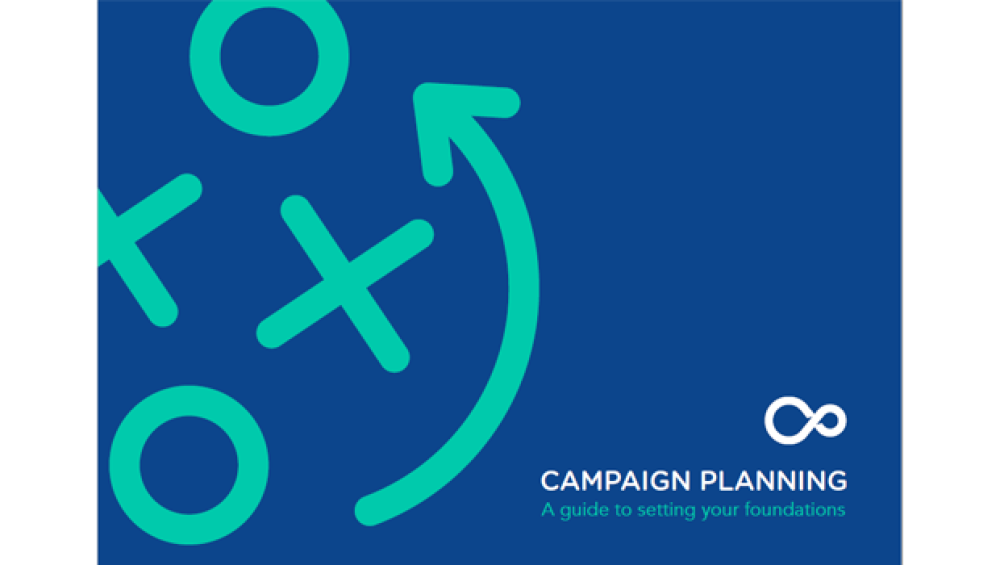Email Campaign Planning for Success: Setting your foundations
23 Oct 2017

As a trusted partner in sophisticated email marketing, we try our best to help our customers to achieve breakthrough results that they can’t get anywhere else. So what’s the big idea? Well, we truly believe that with the right foundations in place, you can conquer the email marketing world. Sometimes it’s hard to know where to start your planning to make sure that you’re logically planning out all of your complex customer journeys. Sounds hard doesn’t it? But, it doesn’t have to be. We can help you to plan your foundations so that you can take your one-off dispatches to carefully planned and targeted campaigns. Once you’ve accomplished this, you’re truly a sophisticated email marketer, a Cultured King.
Where exactly do you start?
Firstly, let’s figure out - what are you trying to achieve? In email marketing, everyone sets out with the primary objective to ‘engage’ with your subscribers. However, what do you want that engagement to be? A click-through, a view, a tweet? Choose what your end goal is to drive through your email and map it to a stage in your sales funnel. If we’re looking at mapping out how your subscriber engages with the top end of your sales funnel, you might want to consider sending them a series of Welcome emails. Introduce your brand a bit more, what are the benefits of purchasing with you? Have you got any introductory offers that they could use? Do you have any interesting company updates that you think your subscribers might find interesting? Breaking news, new lines added, events? Your subscribers will want to hear about them! All of these are great to start your engagement with a new subscriber. They have actively given you their email address, so why not strike when the iron is still hot.
Equally, at the top of your sales funnel are subscribers who are no longer engaging with your brand. What about re-engaging with unengaged subscribers?
How do you define an ‘unengaged- subscriber’? Well, we could class it as lots of different things, depending very much on your brand and the length of your customer lifecycle. Map out your customer lifecycle, and then at what point would you class someone as unengaged? For us, we would say a subscriber has become unengaged if they haven’t opened your email in the last 90 days, hasn’t clicked through on your emails in the last six months, not visited your store or used their loyalty card in the last 3 months. This is very subjective however, such as if you sell sofas - you may only need to encourage a sale every 5 - 10 years, as opposed to a food merchant who will want to encourage weekly sales. Engage with these subscribers by sending them a re-engagement campaign, tell them how much you miss them, ask if you’ve done something wrong - grab their attention. This is just as important as engaging with new subscribers. Re-engagement Campaigns can give your bottom line an extra boost, as well as improving your email marketing stats
Now we’re talking
So you’ve mapped out the top of your sales funnel with your campaigns, but what about the bottom of the funnel? This is where you can really have some fun with your data. Let’s show your recipients just how well you know them, and what they want to see. Do you know their birthday? What date did they subscribe to your email marketing? Why not send them a Happy Birthday or a Happy Anniversary email? There’s lots of innovative ways you can use your customer data, it’s just having the creative to do it. What about any competitions that you’ve run? How many have they entered vs how many have they won? Have you got an upcoming webinar, or do you simply want them to check or update their preferences? Use this information, including the data that you have about their interests to send personalised and targeted emails.
Just as re-engagement campaigns are important for the top of your funnel, re-conversion emails are equally as important for the bottom of your funnel. Have you got a list of first-time purchasers who haven’t purchased anything else since? Why not send them a list of your latest offers, get them well and truly back into your funnel. What about the list of subscribers who attended a webinar or an event that you held? Why not send them the details of your next one to get another conversion. After all, the more that you engage with a subscriber, the more you build up your relationship with them.
Next steps
Now you’ve decided on the campaigns, let’s map out how to put them into action
- Step 1 - Get your head in the right place! If your office is loud or too busy, take yourself to a quiet a space or whatever works for you to get creative. Remember to aim high, you can always take it down a little bit at a later stage.
- Step 2 - Set your campaign’s objectives. Make them SMART so that you don’t lose sight of your key aims of the campaigns. Check yourself at different points in the process, is what you’re creating driving the subscriber to what you want to achieve?
- Step 3 - Set your KPIs. Can you prove your objectives? What does success look like and how are you going to measure this? Make this really clear from the beginning to make sure that you stay focused.
Tips for success
- From a blank piece of paper to a planning software, use a tool to plan with.
- Define the goal of each email in your campaign to help you execute your creatives and demonstrate to key stakeholders what you’re trying to achieve.
- Take it one step at a time, plan big but execute small.
- Let others know your plans, you’ve already failed if you’re the only person in your company who understands your ideas.
- Be agile, accept that you won’t get it all right first time around. Use these learnings to make your campaign bigger and better.
Would you like to find out more?
Take a look at our Campaign Planning: a guide to setting your foundations or get in touch, we would love to hear from you!

Please login to comment.
Comments